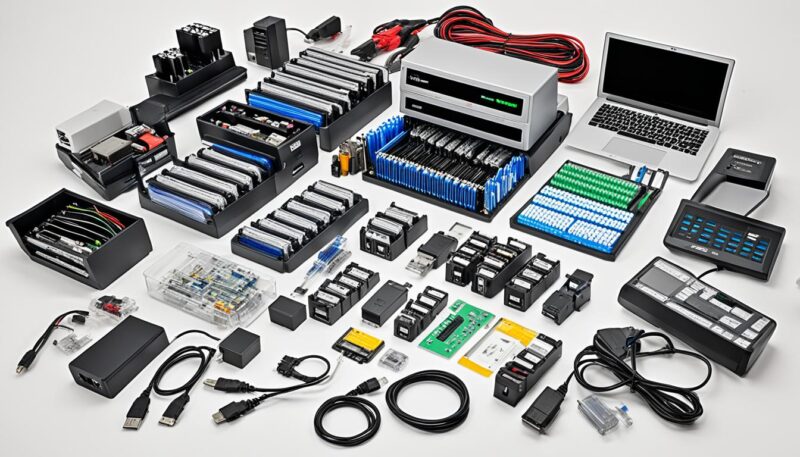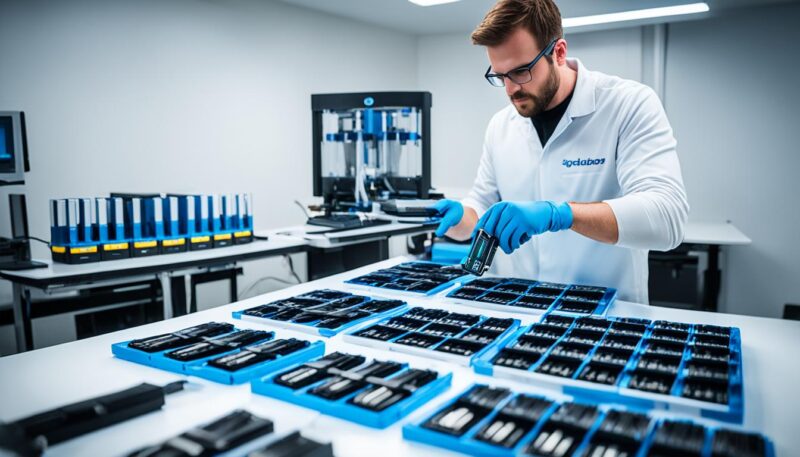Imagine the excitement of handing out custom flash drives at a major event, each loaded with all the data your audience needs. Effortlessly sharing critical information becomes a reality, saving you immeasurable time and energy. USB duplication, especially for beginners, can feel daunting, but rest assured, it doesn’t have to be. This ultimate guide not only simplifies the process but empowers you to complete it with efficiency and confidence.
Key Takeaways
- Grasp the fundamentals of USB duplication
- Learn the distinctions between copying and cloning USB drives
- Identify the necessary hardware and tools
- Explore top recommended software for USB duplication
- Understand the step-by-step process for efficient USB duplication
Understanding USB Duplication
USB duplication, or the replication of data across multiple USB drives, offers numerous advantages over traditional copying methods. It ensures the dissemination of information quickly and consistently, which is particularly useful for large-scale distributions such as promotional events or software updates. Renowned for their portability and reusability, USB flash drives, often referred to as ‘U disks’, embody convenience and efficiency in data management.
Definition and Benefits
The USB duplication process leverages the USB mass storage device standard supported by modern operating systems, simplifying access and data transfer methods. The main benefits of USB duplication include higher durability, increased capacity, and faster speeds compared to other portable storage options. By employing efficient USB copying techniques, businesses can ensure the integrity and reliability of data distribution, enhancing overall operational efficiency.
Differences Between Copying and Cloning
Understanding the differences between USB copying and USB cloning tools is essential for accurately managing USB data. Copying typically involves duplicating files to a new location, while cloning encompasses a bit-for-bit copy of the entire drive, including the master boot record and partition tables crucial for system start-up. Opt for USB copying when quick distribution of files is needed and choose cloning for creating an exact replica of the original drive, suitable for backups or deploying uniform system environments across multiple machines.
| Feature | Copying | Cloning |
|---|---|---|
| Process Type | File duplication | Bit-for-bit replication |
| Use Case | Quick file distribution | System backups, uniform deployments |
| Data Transfer | Files only | Entire drive (including boot records) |
For those seeking effective data transfer methods and USB drive copying tips, it’s crucial to choose the appropriate method based on specific requirements and desired outcomes. Navigating these differences will enable more efficient and reliable data management practices, using the appropriate techniques and tools.
USB Duplication Tools and Techniques
When it comes to USB duplication, having the right tools and techniques in place can significantly enhance efficiency and precision. Understanding the necessary hardware and software can make a substantial difference in handling USB drives effectively.

Hardware Requirements
Investing in professional USB duplication equipment ensures consistent and reliable results, especially for high-volume tasks. Specialized multi-target USB duplicators, such as those offered by Aleratec or StarTech, provide robust solutions for frequent duplication needs. However, for occasional projects, a high-quality consumer-grade hub like the Anker AH241 USB 3.0 Aluminum 13-Port Hub can suffice. Including a power supply with the hub is crucial to avoid connectivity issues that could disrupt the duplication process.
Recommended Software
Selecting effective USB duplication software is paramount for achieving accurate and concurrent image writing across multiple drives. ImageUSB by PassMark Software stands out as a top choice due to its capacity to create exact bit-level copies, ensuring precision in mass duplication endeavors. This USB duplication software is lauded for its longstanding reliability and is widely used for various duplication requirements.
By leveraging the right combination of USB duplication equipment and software, users can streamline the process of handling USB drives, ensuring both efficiency and accuracy.
Step-by-Step USB Duplication Process
The USB duplication process starts by installing and utilizing the reliable ImageUSB software. This trustworthy program is essential for creating an accurate master flash drive, which will be the template for all target drives. It’s crucial that this master drive is correctly imaged, as it ensures consistency across all duplications.
During the USB duplication process, it is imperative to use a dedicated computer to avoid interruptions and potential errors. Ensuring that the target drives are identical to the master drive and freshly formatted will yield optimal duplication results. By adhering to USB duplication best practices, users can achieve high-quality and reliable duplicates.
Once the duplication is complete, post-image verification becomes a vital step. This verification ensures the accuracy and integrity of the duplicated data. Additionally, employing Windows PowerShell can expedite the mass ejection of completed drives, enhancing efficiency and streamlining the overall USB duplication process.
By following these steps and staying committed to USB duplication best practices, individuals and businesses can maintain high standards of data consistency and reliability.
Conclusion
Mastering USB duplication opens new horizons for anyone involved in data distribution. By understanding the critical differences between copying and cloning, one can ensure efficient data replication that meets precise needs. USB duplication not only elevates the process of USB data transfer techniques but also plays a vital role in efficiently disseminating large volumes of data across multiple devices.
From incorporating the correct hardware and choosing the best software, to following a structured step-by-step USB duplication process, this guide equips beginners with essential insights. Whether the objective is promotional distribution, organizational software updates, or repurposing flash drives, the knowledge imparted here allows for a seamless and dependable duplication experience.
In summary, USB duplication stands as an invaluable solution for efficient data replication tasks. By leveraging the robust information presented in this guide, users can confidently manage and execute their USB data transfer techniques, ensuring they meet their specific data replication goals with proficiency and ease.
Source Links
- https://www.everyusb.com/how-do-you-copy-data-to-multiple-flash-drives-at-once
- https://www.linkedin.com/pulse/basic-knowledge-you-usb-duplication-industry-eileen-tang
- https://www.easeus.com/backup-utility/copy-a-flash-drive-to-another-flash-drive.html








